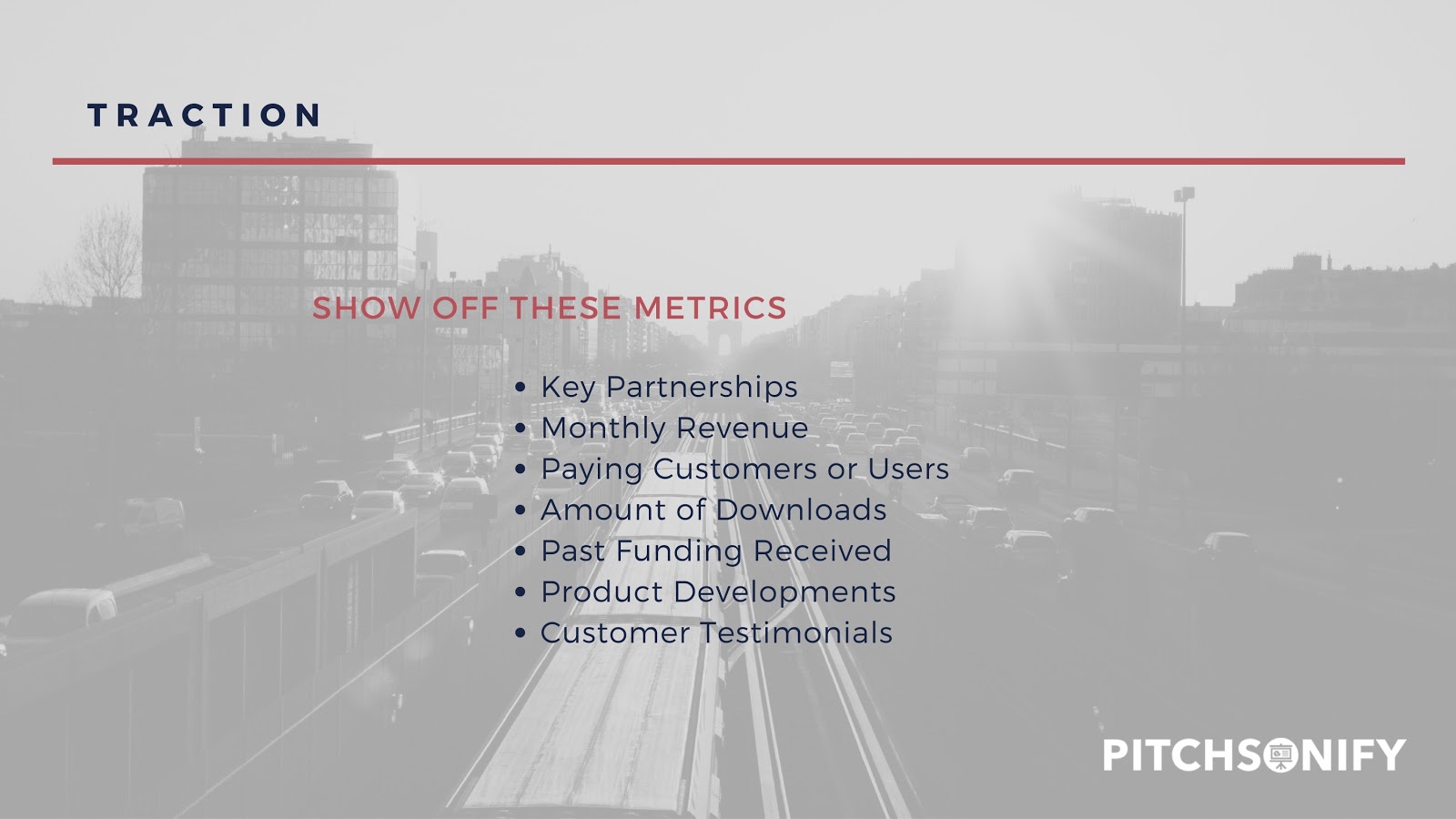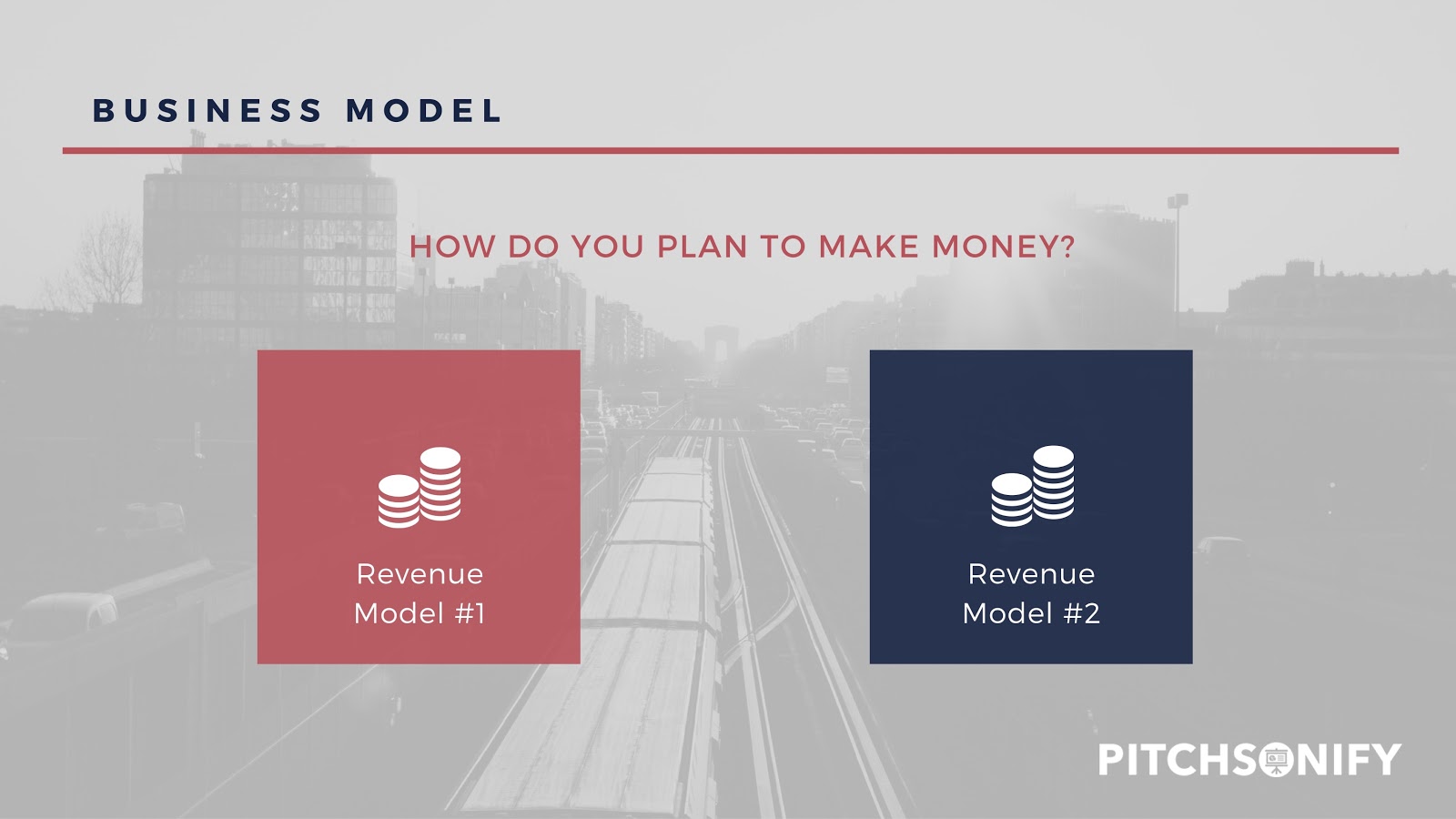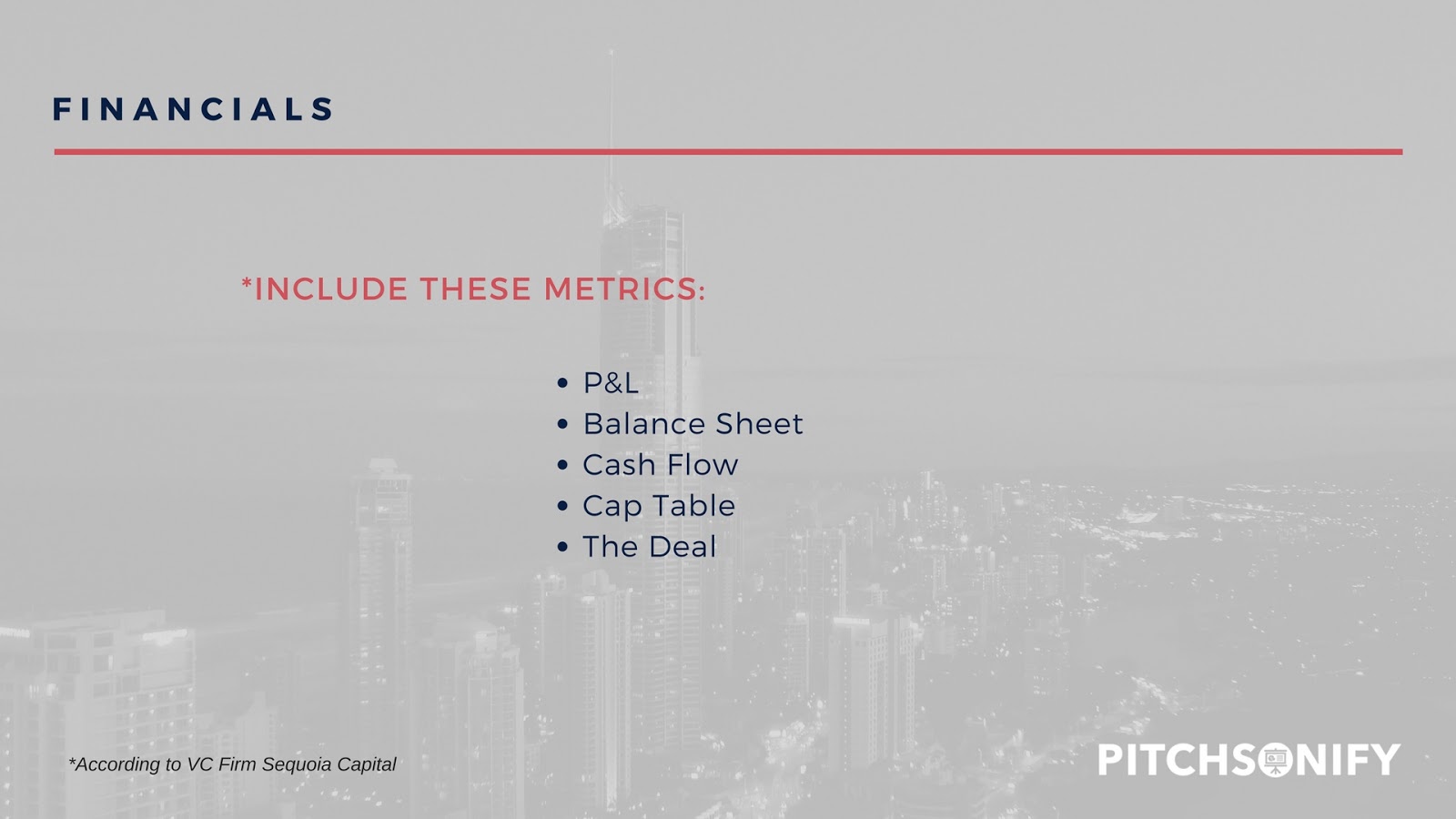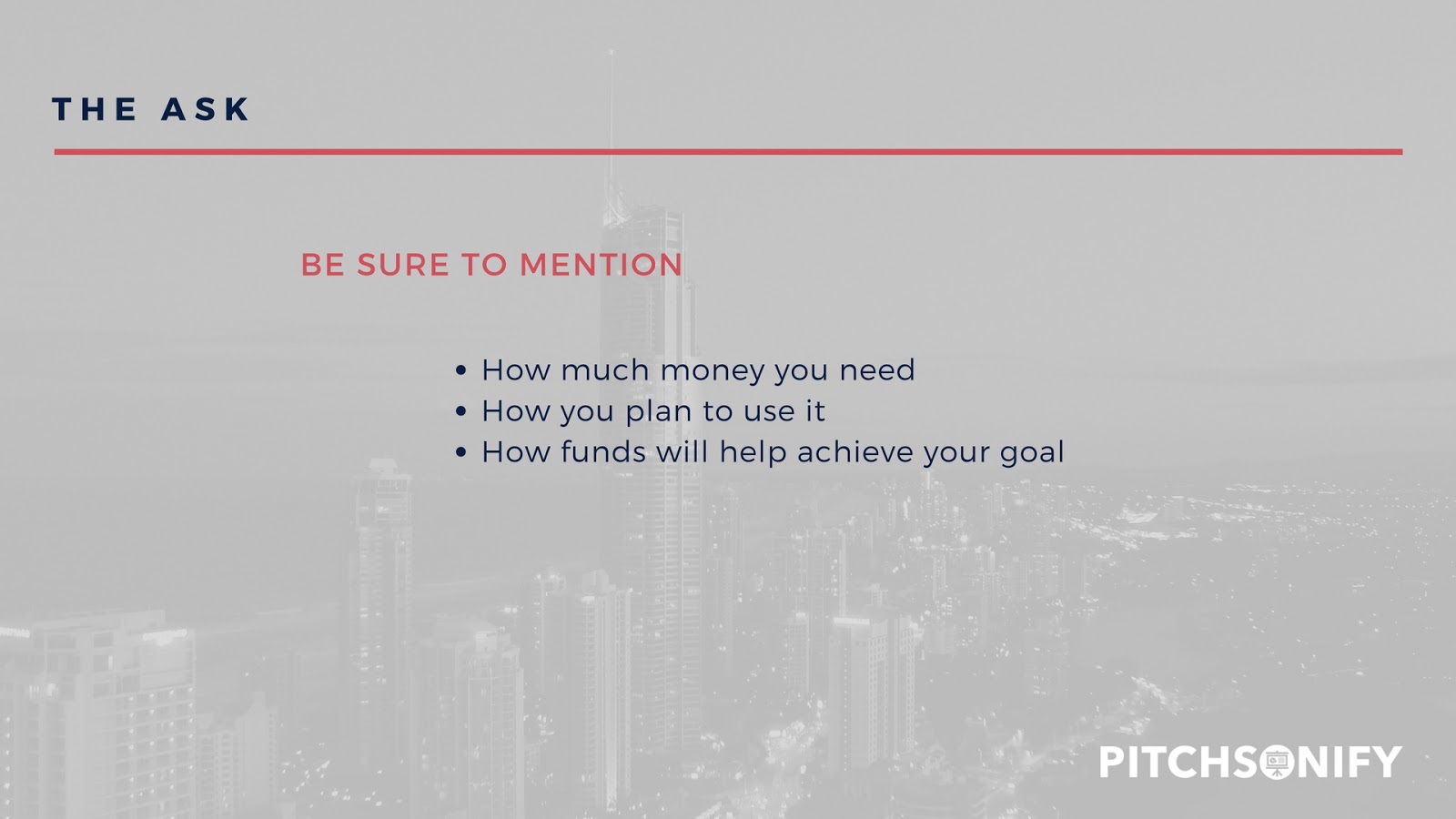
Read Time: 5 minutes
Pitch decks come in all shapes and sizes. On average, deck length sits around 19 slides. The amount of slides and type of content you include depends on who you present to and what you try to raise capital for. Regardless, there a certain slides that need to be included to deliver an effective and cohesive presentation.
So get your digital notepads and pens ready, because here are 12 slides every winning pitch deck needs for successful fundraising.
Company Title

The opener. Let your logo and byline serve as a purposeful introduction to your vision.
Problem

The idea here is to present the current market gap you plan to fill by underlining what problems need solving. This is arguably one of the most important slides in your deck.
Expose the market opportunity with tangible research and stats. You don’t want to sell your solution just yet, but show how the current products are not doing the job.
Discuss the problem, show the statistics, and make it real to investors. Put them in the driver seat of the issue and make them want a solution.
Related: The Ultimate Pitch Deck Guide To Raise Capital For Your Business
Solution

Now that you’ve got your audience in need of a solution, here’s where you give it to them. The goal of this slide is straightforward. How are you going to solve the problem?
Keep it simple. You want to make your solution clear and simple so your audience can understand without further questions.
Current Status or Traction

Investors are less interested in how your product works. They are more concerned with if this is a good opportunity for them and their firm. This next slide delivers what milestones you’ve hit so far with your product or service.
Depending on where you are as a start-up, the content will vary. Regardless, you’re welcome to show off a little bit in the traction slide.
If you haven’t launched yet, clearly state where you are in the process and why.
Product

This slide will showcase your product and all the great benefits it has to offer. Use screenshots, screenflow, a demo, or short film to showcase benefits. Highlight 3-5 exclusive features without giving away too much. Show your audience how your product brings value to their lives.
The Market Opportunity

Now your audience can feel the problem. They understand the solution and see how your product will help them. The Market Opportunity slide will expose your position in the market.
Present your Total Addressable Market (TAM), Segmented Addressable Market (SAM) and Share of Market (SOM) to give investors an idea of the market potential.
Place value on the market to help show potential. Who are you ideal customers? How much does it cost to acquire them? If you operate in a niche market, show how you will stand out amongst the competition.
What’s most important is how many people can adopt your solution, how big the market is today, and how big it will be tomorrow.
Read: The Ultimate Pitch Deck Guide To Raise Capital For Your Business
Competition

Use this slide to showcase your competitive advantage, or the “secret sauce” as referred to by Kawasaki. Here you want to show who your competitors are and discuss why you are different.
Do this through a transparent and easy-to-read diagram of your competitive landscape.
Business Model

How you plan to drive revenue is important to any investor. They want to know how they will make their money back in the long run. Underline your revenue models and show any current revenue stream you have.
Go-To-Market Plan

How do you plan to get customers on board?
Your Go To Market slide will shed light on how you plan to acquire customers and deliver your product. During your presentation, go into detail about how to plan to reach your market to show investors you have a good grasp on the landscape.
Team

The team slide is necessary for any successful pitch deck. Be sure to express why your team is the best team to build and grow your company. Showcase how they have the expertise to do what others can’t.
If you don’t have a full team yet, no worries. Explain the key roles that need to be filled and how they are beneficial to the success of your company.
Financials

Financial is the most viewed slide next to team in a pitch deck. This takes into account that Seed and Series A decks may not have this information yet. If you do include it, carefully deliver this information with realistic expectations.
Here you want to show investors the traction you have generated. They will also want to see your projections for a few years out.They will know when you overshoot financial expectations.
Use a simple chart to show your sales forecasts, expenses, profits, and total customers.
Be prepared to discuss your assumptions and revenue stream with them.
The Ask

Your closing slide. The Ask. This slide is important to include because it tells investors what you plan to do with their money. Now is your chance to namedrop. If you have other investors, discuss why they chose to invest in your company and their satisfaction with your current traction.
Parting words…
Now you have everything you need to build out the content for you deck. Want to learn more about how to tell your story and get expert pitch deck design tips?
Swing over to the Pitchsonify Ultimate Pitch Deck Guide to learn more and get the funding you need for your company.

 March 19, 2018
March 19, 2018